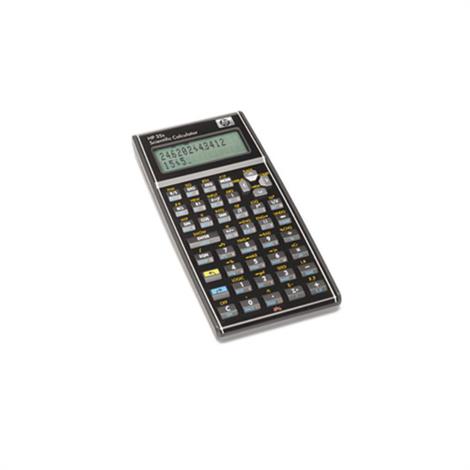

The case was cut out of a large single sheet of copper clad circuit board material and soldered together into a box. The keypad is soldered from 42 tactile switches, and the button labels were cut on a laser printer into stamp rubber and then painted. Luckily, the logic of the LCD will run at 3.5v, so I use a 555 timer to supply around -2v on the contrast pin to make the display visible. While the systems runs at around 3.6v, the LCD expects 5v and sets the contrast relative to the voltage difference between the supply voltage and contrast pin. The display is a simple 4x20 HD44780 compatible LCD. With 32 decimal places, the calculator produces extremely accurate results. The accuracy of calculation can be set from 12 to 32 decimal places in the settings screen. This is an enhancement of the App: RPN Turbo Calc X3. According to our customers, it's the most powerful and fastest RPN scientific pocket calculator ever built. WP 34S turns either of these calculators into a powerful keystroke programmable scientific device.
PROGRAMMABLE RPN SCIENTIFIC CALCULATOR PLUS
(4) It's programmable Plus there's a 30 day free trial. This project has created scientific firmware for the HP-20b and HP-30b business calculators.
PROGRAMMABLE RPN SCIENTIFIC CALCULATOR SOFTWARE
The software supports basic math functions, exponents, logarithms, roots, and trig functions. (2) Financial/ Scientific Calculator - simulates HP Calculators (3) Interacts with Excel spreadsheets using a comma delimited row or column. Instead, I designed a converter program that would let me refer to memory stored externally using arrays then convert those array accesses at compile time to function calls that use the GPIO to read and write data to the chip. The main memory is 128k of parallel SRAM, which the MSP430 cannot address directly as memory since it lacks an external bus. RPN Scientific Calculator This calculator has two MSP430s working in tandem to control the memory, screen, and keyboard. Posts about this project: Programmable RPN Calculator The only thing missing is labels for the keys. It consumer around 250ma, so I power the calculator with two 18650 rechargeable batteries. The display is a noritake VFD which looks really great. There was also extra room in the flash of this chip, so I added a simple keystroke programming mode. The ARM core running at 48MHz in this calculator offers much faster performance than the MSP430s of the last project.

It uses the same strategy of referring to memory in the 128k external ram with variable names and converting those references to function calls at compile time that I used on the RPN Scientific Calculator. Rather than two MSP430 microcontrollers with 128k parallel SRAM and shift registers, this calculator uses an LPC1114 with a 128k SPI SRAM for a much more compact design. Programmable RPN Calculator This calculator is based directly off of my RPN Scientific Calculator (see below). For projects I'm working on now, see Current Projects. These are finished calculator projects I have worked on.


 0 kommentar(er)
0 kommentar(er)
